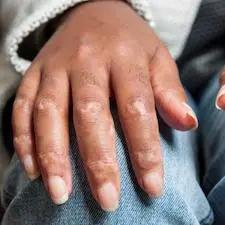Article
Rise in Overall Mortality in Spain Attributable to Systemic Sclerosis
Author(s):
Between 1980 and 2019 in Spain, a total of 2914 deaths were attributable to SSc, with rates increasing in a 4-year period in the 1980s.

Systemic sclerosis (SSc) was responsible for a rise in overall mortality in Spain over the course of nearly 4 decades, according to data from a new database analysis. Notably, a progressive drop in SSc-related deaths was recorded in male patients.
Previous research has suggested that the prevalence of SSC in Spain is approximately 27.7 individuals per 100,000. Despite this prevalence, few studies have assessed the overall mortality rates of SSc in Spain and have often been limited by sample sizes to the RESCLE registry, which was established in 2006 by the Spanish Internal Medicine Society.
With this study, Juan-Carlos Hernández-Rodríguez, PhD, of Virgen del Rocio University Hospital in Seville, and a team of investigators sought changes in mortality trends in the Spain related to SSc between 1980 and 2019.
Hernández-Rodríguez and colleagues collected data on the annual number of deaths due to SSc from this time period from the Spanish National Statistics Institute, drawing from death certificates specifically coded for the condition.
Data Collection
Mid-year population data were also collected through the institute, and cases of systemic sclerosis induced by drug and/or chemicals were not included in the analysis.
From there, age-standardized mortality rates (ASMR) were calculated for individual sex and age groups as well as the overall population, and age-period-cohort (APC) and a potential years of life lost (PYLL) analysis were used to further elucidate the burden of SSc.
The Findings
Between 1980 and 2019, a total of 2914 deaths were attributable to SSc, with rates increasing in a 4-year period in the Eighties. The ASMR from 1980-1984 was 1.87 per 1,00,000 inhabitants, eventually reaching 2.47 cases from 2015-2019. Female ASMR in particular rose from 2.10 to 3.52 cases during this time, while male ASMR dropped from 1.50 to 1.13.
Investigators noted that the current study was similar to previous SSc mortality studies in that the age effect was associated with higher mortality rates as age progressed, with SSc cases that onset in patients over 60 years being associated with worse survival rates.
The team also attributed the rise of SSc cases in the 1980s to a “greater awareness of physicians and an accurate diagnosis” beginning in the 1950s, an hypothesized that the trend fall recorded in the 1990s in younger cohorts indicated a stabilization of SSc-relared mortality rates in Spain, “although an upcoming monitoring is required to confirm these findings”.
The study, “Systemic sclerosis mortality trends in Spain from 1980 to 2019: age-period-cohort and Jointpoint analysis,” was published online in Clinical and Experimental Dermatology.





